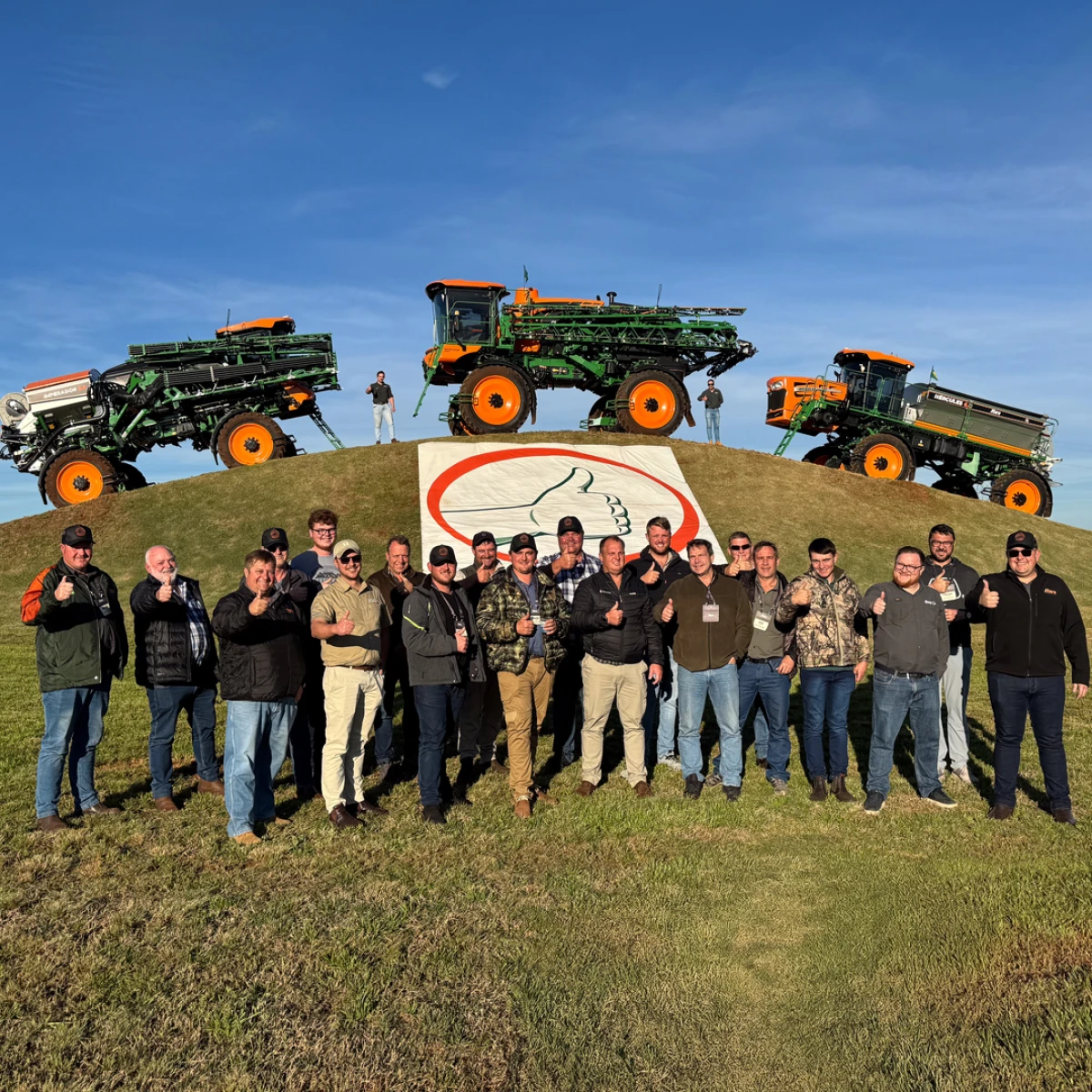What about harvesting 114.8 sacks of soybeans in one hectare? This was the result the partners Éder Leomar dos Santos and Arnei Bartz reached to become the productivity champions at the National Challenge of Maximum Harvest Soybean Productivity 21/22 in the south region. The event was organized by the Strategic Committee of Brazilian Soybeans (CESB). They own the VPS farm, in the city of Camaquã, in the state of the Rio Grande do Sul. They used the Princesa planter and the Imperador 3.0 self-propelled machine on the analyzed area. The award was on June 23rd.
The National Challenge of Maximum Harvest Soybean Productivity provides audited data that show the soybean farm growers how to increase the national average with profitability and sustainability to encourage information sharing among agribusiness professionals. This edition received more than 5 400 applications from soybean grow farmers from all Brazil regions, 52.5% from the south region.
Éder and Arnei told us that they applied for the dry farming category challenge. They were encouraged by agronomists that consult the farm. “It wasn’t anything that we had already done in our crop fields. We are seeking to stabilize yield. In addition, our areas are always connected to experiments, universities, and entities to boost knowledge. They had high potential, and it was confirmed indeed”, says Éder, who is an agronomist engineer too.

Stara paid tribute to the winning customers. In the picture are Éder, and his wife Paula. Leonir dos Santos (Éder and Neusa’ mother), Neusa and Arnei.
The relationship with agriculture is in their genes
The relationship between Éder and Arnei and agriculture is in their genes. Besides being partners, Arnei is married to Éder’s sister, Neusa Rosane dos Santos Bartz. Together, they have two kids, Manuela and Samuel. There are farmers in his family too. Éder is married to Paula Neumann dos Santos. They have a little girl, Martina. But the fortress of the family has always been Volmir Leomar dos Santos, Éder and Neusa’s father, who passed in 2000.
The siblings told us that their father arrived in Camaquã in the ‘60s to work on a farm. After some years, a neighbor landed some money for him so that he could buy his first land, where he started growing vegetables, beans, corn, and then rice. Neusa highlights that her father was a visionary and pursued to innovate, being the pioneer in soybean planting in the region. “I looked up at him. He could see far ahead. He did more than was considered normal back then”, he says.
Éder said that as the farmers in the region were small, one would depend on the another. For this reason, it took them so long to grow soybeans: “The areas were inundated for a long time. But father was persistent. He grew soybeans and rice. The rice crops have always delivered good productivity, but chose to grow soybeans.”
The family said that most farmers of the region didn’t grow soybeans because they were told it was tough. “They grew soybeans once, twice and lost everything because of the inundations. They didn’t have a draining system. We were afraid in the beginning. We took the chance though. The first years were hard, but it ended up turning out well”, says Éder.
“Having a small area with this productivity compensates for all the effort applied to this saga. The first thing that pops in my head is my father insisting to grow soybeans when nobody else would. It wasn’t for nothing. The area wasn’t prepared for it. In fact, it was the knowledge that we have been acquiring all these years and which resulted in a surge of productivity”, says Éder.
What was Stara’s role in this achievement?
The partners used the Princesa planter and the Imperador 3.0 self-propelled sprayer on the winning area. They also own a Victória planter and a trailed Hércules 1000 spreader. They have recently acquired a Cinderela planter, all bought at the Pioneira dealer in the same city.
They highlight the excellent planting quality of the planters and the agility and high income delivered by Imperador 3.0. “As our planting seasons are short, we don’t have much time. We need pieces of equipment that plant precisely and fast”, says Arnei.
They highlight that the determining factor to choosing the Stara planters was the efficient articulation process: “It is required to transport the planters to these areas. For this reason, we needed pieces of equipment easy to be transported.”
They praise the Imperador 3.0 due to its several functions. And the precision and agility of Hércules 10000.
Stara is proud to help these farmers to achieve this award through our machines. We are thankful for trusting us!
Information:
Productivity from the analyzed area: 114.80 sack/ha
Average farm productivity: 70 sack/ha
Farm size: 1350 ha
Area intended for the crops: 1335 ha










